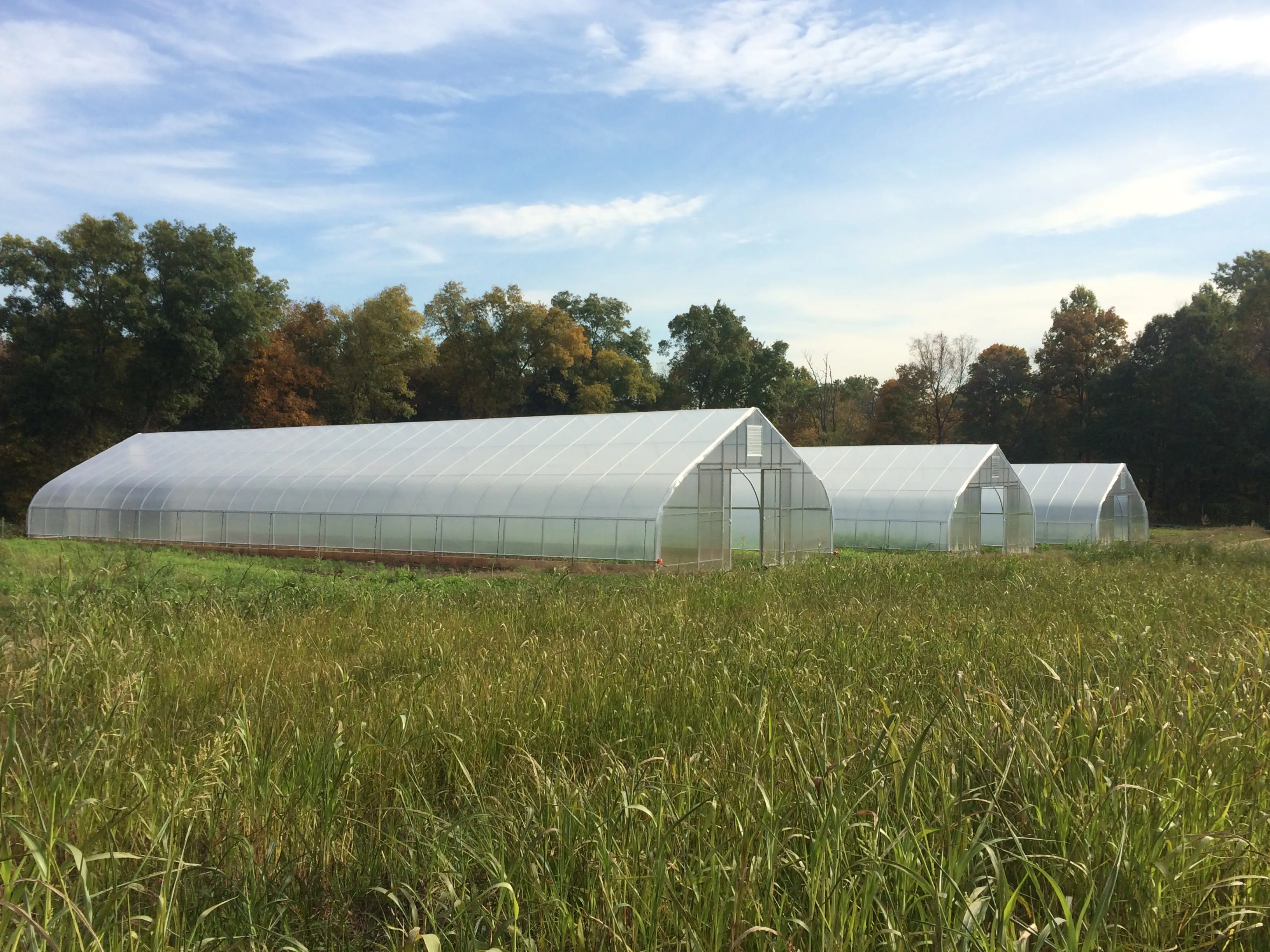Insider Tips for NRCS Funding
Massaro Community Farm in
Woodbridge, CT worked with the NRCS as part of a cost-sharing program to put up these three 30'x96 high
tunnels in 2014.
In need of a new irrigation
system? Looking to install a windrow of native plants? Hoping to build new high tunnels? Whether
you’re starting a farm or looking to upgrade an existing production, the NRCS may be able to help! The Natural Resources Conservation Service
(NRCS) has several financial assistance programs designed to support farmers in
accomplishing projects that will improve and protect the land, water, and surrounding habitat.
Offering grants and technical assistance, the NRCS has regional and national offices that
are here to support such efforts. The application process can feel daunting, so I interviewed Cindy
Askew, a District Conservationist at the NRCS based out of LaFayette, Georgia, to see what insight
she might be able to offer farmers embarking on the quest for financial assistance:
(This interview is summarized and edited for brevity and cohesion)
How competitive is funding?
Funding levels vary across all administrative boundaries. Every funding pool I’ve ever administered
has been very competitive, but circumstances could be different elsewhere. According to Chris
Groskreutz, a State Public Affairs Specialist for the NRCS, there used to be a nationwide
generally accepted approval rate of about 1:3. In more recent years that has slipped to 1:4 or
5. All the reasoning is arguable, but budget and application numbers are definitely
factors.
Some ranking considerations are tied to geographic issues that you can’t influence. E.g. priority
watersheds, groundwater recharge areas, specific wildlife habitat. You can’t pick up your farm and
move it into one of those areas. While, you can’t affect the answer to every question in the ranking
process, you can inquire further about the ones that involve structural and management conservation
measures and determine how they fit with your operation. Make sure you ask about all of the funding
pools that your application could be considered for e.g. Beginning Farmer, Socially Disadvantaged,
Limited Resource, Veteran Farmer. Those definitions are contained in the application (
NRCS
CPA 1200).
What is the NRCS looking for in applicants?
The key to being competitive is to understand the local objectives and fully consider how those
objectives can be met on your operation within a reasonable period of time. Different states offer
varying contract lengths. Applications are ranked based on three levels of priorities, National,
State, and Local. Those priorities can vary considerably from state to state. Some states focus on
very specific resource concerns and choose not to address some land uses, while others approach
things more generally and distribute funds across all resource concerns related to agriculture. You
can find information on
individual state NRCS websites, usually under a
“Programs” tab. Keep in mind that anything you commit to in the ranking process will become part of
a subsequent contract thereafter.
A close up shot of the three 30'x96 high tunnels at
Massaro Community Farm,
who worked with the NRCS as part of a cost-sharing program.
How can farmers increase their chances of receiving NRCS funding?
The best way to increase the chances of funding is to make contact with your local NRCS office
early in the process. The intent of most
USDA cost share programs is to fund applications that provide the
greatest environmental benefit to meet the particular program objectives most efficiently. Many
conservation practices increase productivity, but for NRCS programs the primary purpose is to
address a resource concern.
For example, if the resource concern is water quantity, an application to replace or retrofit an
existing irrigation system that is inefficient with a microirrigation system (with the development
of an Irrigation Water Management Plan), would address the resource concern as well as enhance
productivity.
What mistakes are commonly made in the grant application process?
Getting initial eligibility established can be frustrating. The common mistake is that folks get
discouraged or feel put off on the front end. Once the initial eligibility is established, the
process is more relevant to the farm planning instead of the administrative side of things. Follow
up until the local field office can tell you that your application status is “Eligible.”
[NOTE: If your farm is managed as an entity it can be even more laborious to address the initial
eligibility issues. Respond promptly if the agency requests additional information. You will need to
be entered as a USDA participant into the SCIMS (Service Center Information Management System)
database. This entry will need to be consistent with the name you use as you complete transactions
with the Internal Revenue Service. Your operation will need to be assigned a USDA farm and tract
number by the Farm Services Agency. At a minimum you will need to complete an
AD1026 Highly Erodible Land Conservation and Wetland Conservation
Certification form and a
CCC941 Average Adjusted Gross Income Certification
and Consent to Disclosure of Tax Information form. These two certifications establish your basic
eligibility for participation. Procedures are more complicated for various entities, but all will
require application for a DUNS number and registration in the
SAM.gov database. You should
be able to get assistance from your local NRCS office with that process.]
Receiving NRCS funding means working under contract with them, which might not be ideal in all
circumstances. It would be wise to investigate early on in the process what agreements you may have
to make to receive funding and how that might impact your business. Looking for more info? Check out
this
database of grant opportunities, and the
USDA’s
New Farmers website.
If you liked this article, and want to see more like it, enter your email in the
subscribe box to the top-right of this page and we'll send you new blog articles as we publish them.
Jane works as a Field Production Specialist at the Center for Agroecology and Sustainable
Food Systems, where her days are filled with tractor work, irrigation coordination, orchard
care, and educating apprentices and interns. Her favorite way to end a long day's work in
the sun, is running down the hill to Mitchell's Cove and jumping in the Pacific.

